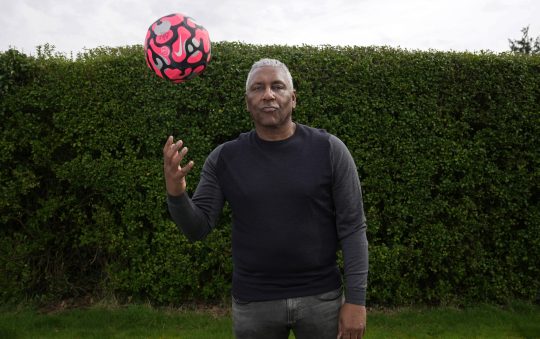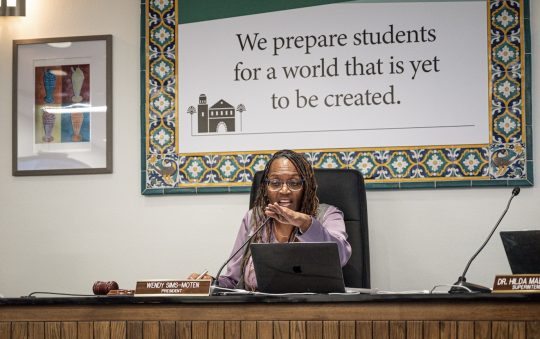
LOS ANGELES HEARING FEBRUARY 9, 2017: TESTIMONY OF LARRY AUBRY, CO-CHAIR, BLACK COMMUNITY, CLERGY AND LABOR ALLIANCE (BCCLA) AND CHAIR, BCCLA EDUCATION COMMITTEE
My testimony on is from an unapologetically Black perspective.
Unfortunately, in urban areas throughout the nation, chronically failing public schools are the norm, not the exception. My testimony focuses on Black students who, by any measure, remain at the lowest levels. The late law professor, Derrick Bell called them, “Faces at the bottom of the well.”
There are systemic barriers to Black students’ education. Actually, they are the same systemic barriers that define power in America: Racism and its cohort, white privilege. Public education was not designed for Black children. In fact, it was designed to exclude them. Racism and white privilege are the fundamental barriers and in the 21st century they remain as dominant as ever. (A dangerously narcissistic US president can only make matters indescribably worse.) For Black students, significant change will not happen until Blacks together with similarly committed allies develop sustainable pressure that threatens those in power in the education establishment.
(There are internal barriers on the community’s side as well. For example, Black people have internalized European values without access to their benefits. In no small measure this accounts for Blacks’ reticence to challenge the “system,” because, without countering values, to move on the system, is to move on one’s self.)
A recurrent question: What do Black parents want? The answer is that they want what all other parents want: A quality education for their children. However, their concerns have largely fallen on deaf ears and a great deal of grass roots organizing and sustainable collaboration with other groups supportive of the same goals will be needed to overcome systemic race-based obstacles. Yes, this is a monumental, but essential task.
Despite strong evidence that active parent participation at local schools helps improve student achievement, Black parents, especially, are generally not really part of the school decision- making process. In fact most local school parent advisory councils routinely do the bidding of the principal. Strong, parents who challenge policy and regulations are still treated as trouble makers. (Most often, parents are rewarded for compliance rather than for contributing to quality outcomes.
I’m sure we all know that funding and resources are routinely not equitably allocated to Black students, despite various government programs, such as ESEA and now, ESSA (Every Student Succeeds Act). Change is barely perceptible for Black students generally, and for poor inner city Black students there’s virtually no change at all. But where is the outrage? Where are the picket lines around chronically failing public schools? This is where parents, so-called political leadership, and local civil rights groups have dropped the ball. And their collective failure to fight hard for Black students is reprehensible.
We may not want to face these disturbing facts, but we must. What makes it even harder to do is because in some ways, as implied earlier, Blacks themselves are often complicit in their own oppression. However, I see all of these barriers, systemic, intra-group and individual, as points of challenge, not discouragement.
In 2014, then US Secretary Arne Duncan denounced the inequities America’s schools cited in the Department of Education survey, Data Collection. “The inequities are socially divisive educationally unsound, morally bankrupt and economically self-destructive…..this must compel us to act.” This is an apt description of the continuing race-based disparities in urban school districts throughout the nation. However, neither Duncan nor the Survey offer an explanation of the stark disparities between Black and white students. The basic reason is racism.
We are tired of research that simply affirms the obvious and must also demand that education research on failing schools emphasize the importance of causal factors.
Factors that contribute to chronically failing public schools and race-based inequities include: Black students were expelled at triple the rate of their white counterparts. Five percent of white students were suspended compared to 16% of Black students. Black girls were suspended at the rate of 12%-far greater than girls of any other race or ethnicity. Students of color have less access to experienced teachers and most of these students are stuck in schools where as many as twenty percent of the teachers do not meet license and certification requirements
What about solutions? There is not time to deal with solutions properly, but a key factor is strong, effective leadership. Ideally, such leadership will be based on agreed upon moral and ethical common ground. Sound utopian?
Perhaps, but think about what will happen if public education continues to demonize Black students. It’s hard to imagine things getting worse, but with a blatantly conservative Trump America comfortably in the drivers’ seat, Black passivity is not an option, individually or collectively.
Effective, committed leadership—and leadership accountability—are central for developing sustainable solutions to chronically failing public schools. Black leadership, especially, must again embrace moral and ethical values because their leadership has to be in the vanguard for change. (Remember, what ultimately happens in any community is what that community allows and does not allow.) Strong, ethical and effective leadership is indispensable to nurture and protect what is best for our children.
In our personal lives, we are sometimes the nail and sometimes the hammer. However, when it involves ensuring a quality education for our children, we must always be the hammer.






